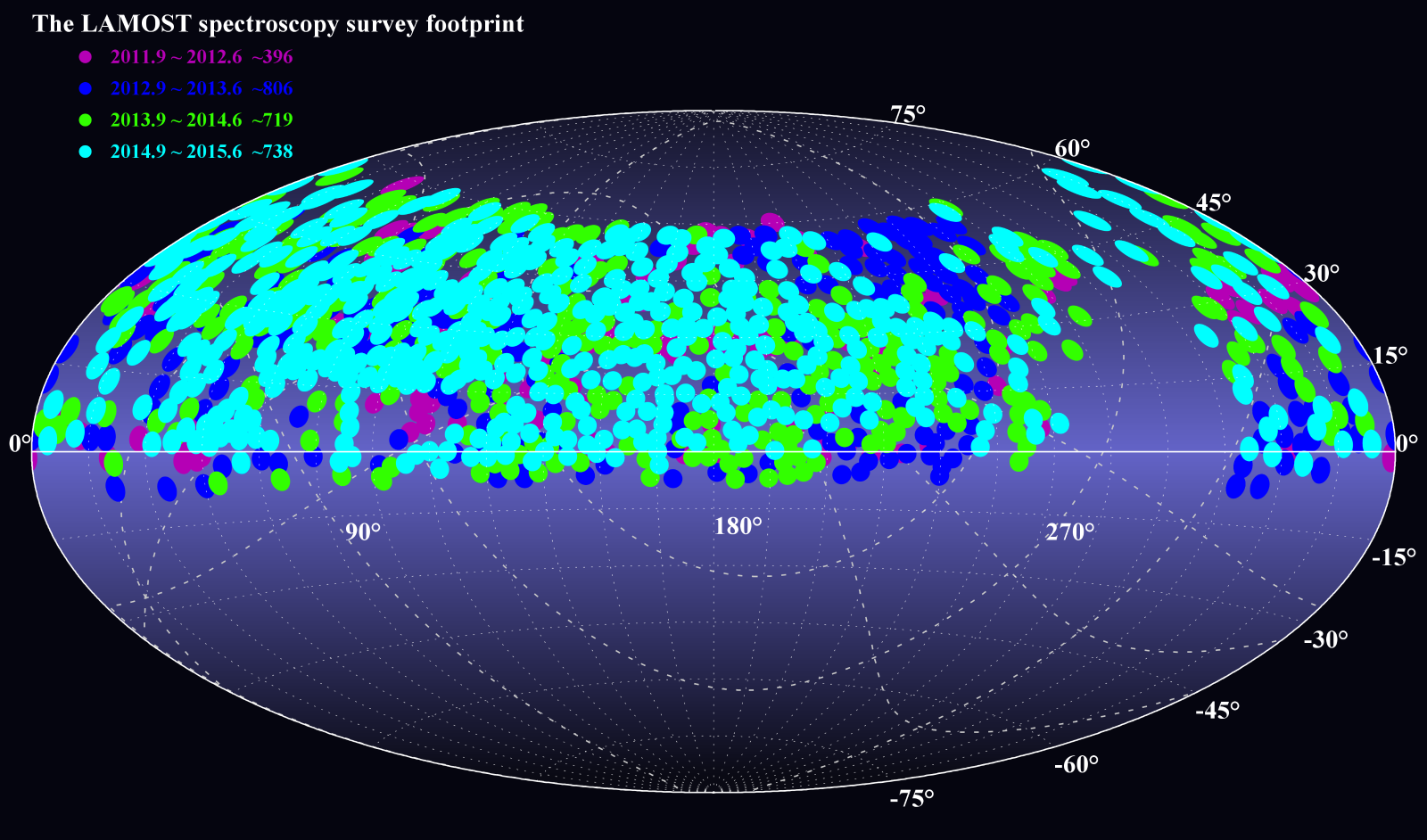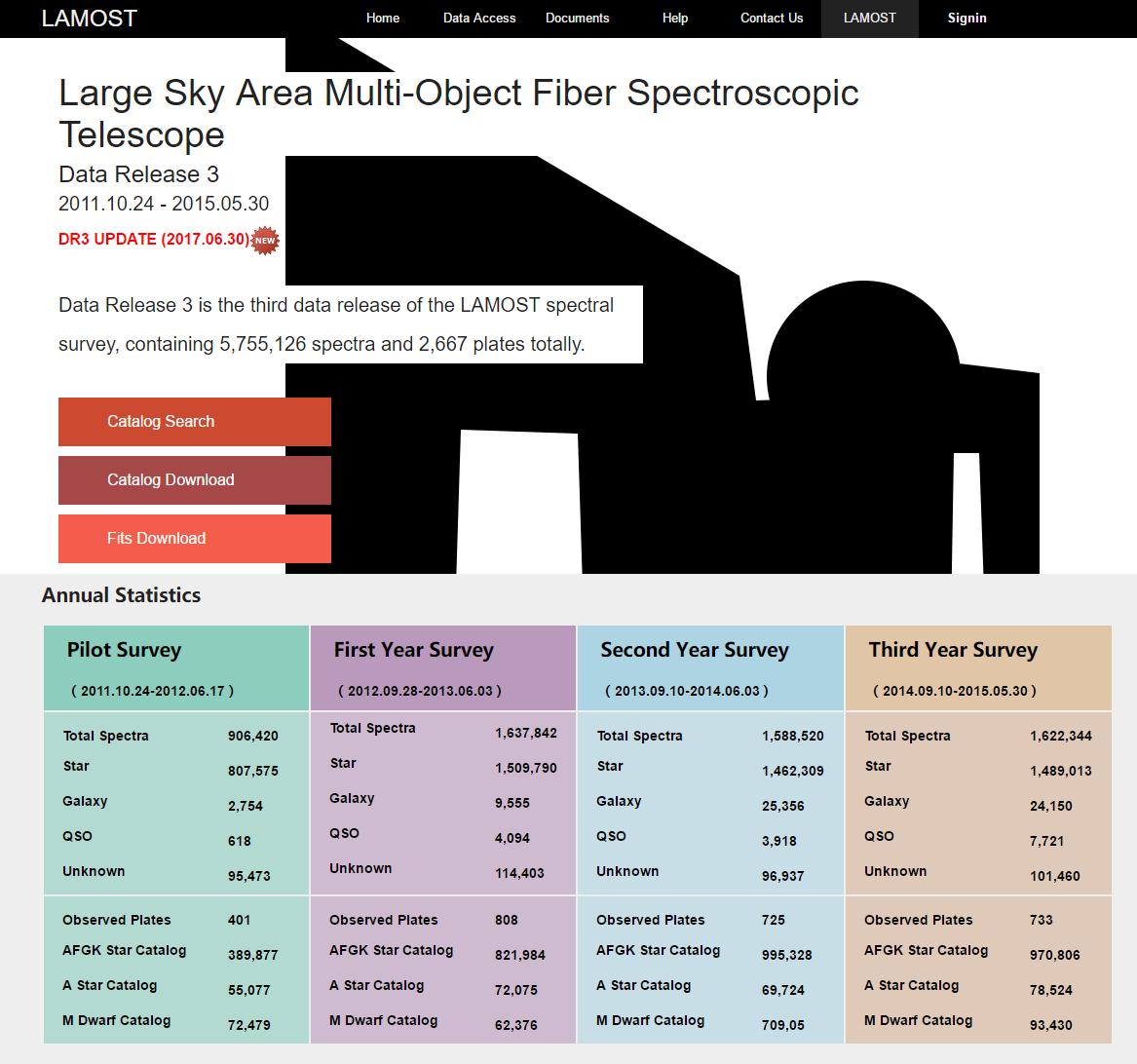
先导巡天和前三年正式巡天所覆盖的天区
2017年6月30日,LAMOST DR3数据正式向全世界的天文学家们发布。此次发布的数据包括了先导巡天和前三年正式巡天获得的所有光谱。LAMOST DR3 光谱数据获得于2011 年10 月至2015 年6 月四年的巡天观测任务,共有575万条光谱对全球开放,其中包括466万条信噪比大于10的高质量光谱。除此之外,发布数据集中还提供了一个包含317万颗恒星的光谱参数星表,这是目前世界上最大的恒星光谱参数星表。依照国际惯例,LAMOST DR3经过保护期之后现对全球公众完全开放。任何对LAMOST DR3感兴趣的用户都可以在官网上查询和下载数据。

巡天数据统计表
巨大的数据量证明了LAMOST的确拥有世界上最高的光谱获取率。 图1显示了先导巡天和前三年正式巡天所覆盖的天区。

DR3 官网
经过5年的正式巡天,LAMOST收集了约900万条光谱,这对于众多天文研究领域都是非常有价值的资源。科学家们利用获取的光谱创造出一个“数字银河”用来研究银河系的结构,形成和演化。随着Gaia和LAMOST巡天顺利进行,在不远的将来银河系天文学将迎来一个全新的时代。
中国虚拟天文台为LAMOST提供了涵盖数据全生命周期的管理和开放共享服务。
LAMOST DR3 Released Internationally
On June 30, 2017, LAMOST released its third Data Release (DR3) to astronomers worldwide, which includes all spectra obtained during the pilot survey and the first three years’ regular survey. Through LAMOST DR3, a total number of 5.75 million spectra were released to the international community, which included 4.66 million high-quality spectra with SNR ≥ 10. Besides, a catalogue which is provided stellar parameters of 3.17 million stars was also released internationally in this data set. DR3 has thus resulted in the largest public spectral set and stellar parameter catalogue in the world at present. According to the international practice, LAMOST DR3 is completely open to the world publically after the protection period. Any one that is interested in using LAMOST DR3 can log on the website to download this data set .
The huge data volume proves that LAMOST is indeed with the world’s highest spectral acquisition rate. Fig. 1 shows the footprint of LAMOST pilot survey and the first three years’ regular survey.
LAMOST results in a final catalogue of about 9 million spectra after its five-year regular survey, which is an exceedingly valuable resource for a variety of astronomical fields. With the obtained data, scientists create a “Digital Galaxy” for future research on the structure, formation and evolution of Galaxy. As Gaia and LAMOST sky survey move on smoothly, the near-future Galactic astronomy will enter a whole new era of LAMOST and Gaia.